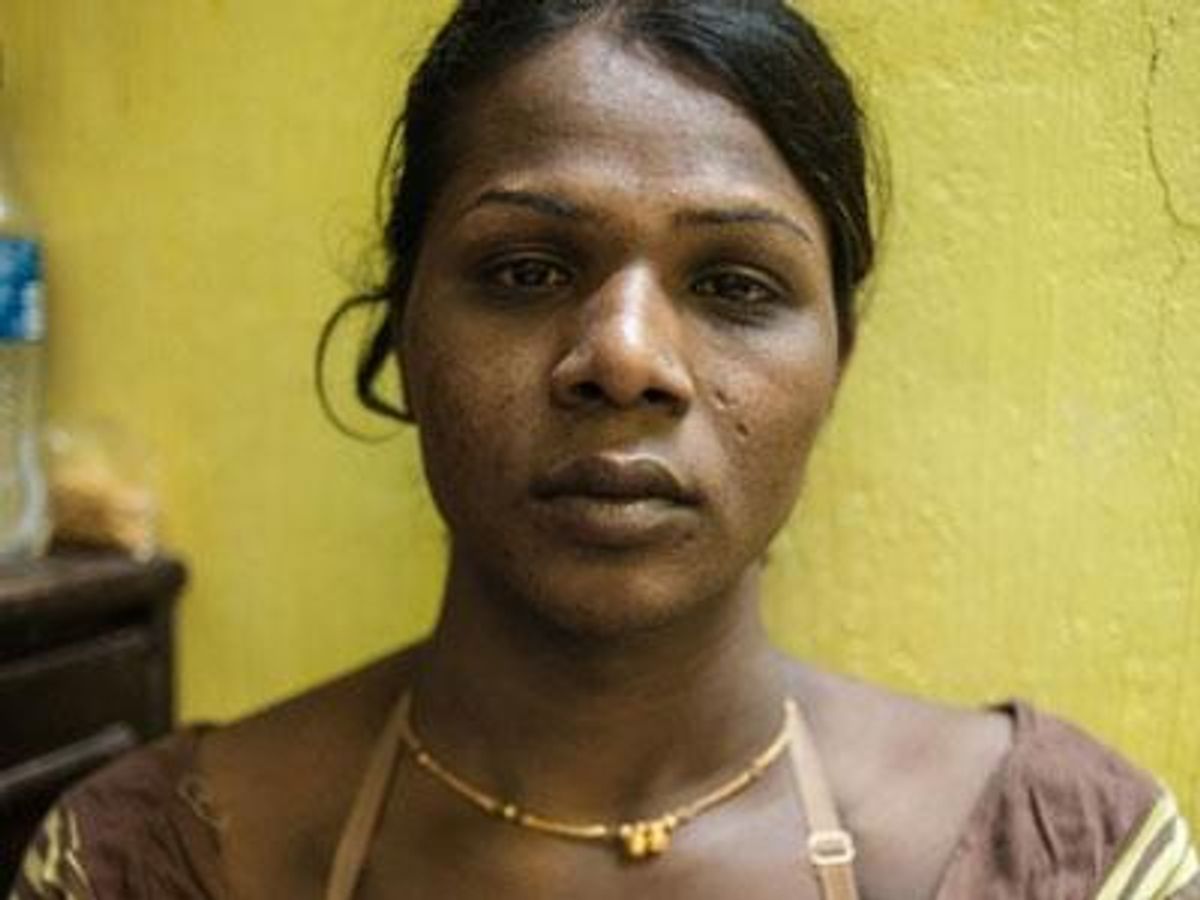The term "hijra," in India, is used to refer to transgender women. The country has an estimated 1 million hijras, with communities recorded back more than 4,000 years. They've had a sanctioned place in Indian society and culture throughout time. But their visibility in history -- with ancient myths bestowing them special powers to bring luck and fertility -- hasn't protected the hijra.
Because the Raj first classified the hijra as a "tribe" at a time when the Raj also outlawed all tribes, hijras have faced severe harassment and discrimination. Hijras are usually rejected by their families and communities once they reveal their gender identity, and they are almost always forced to leave the family home.
Ostracized by loved ones and harassed constantly by police, hijras instead form small groups for their protection. These groups are led by a "guru" or mother figure. At their best, the groups can be supportive, nurturing and family-like. Out of a necessity to protect themselves, hijras even developed their own language -- a mixture of Hindi, Farsi, Urdu and a little Arabic. Most hijras are uneducated and, combined with the discrimination they face, gaining mainstream employment is made almost impossible. Hijras work mostly in the sex trade, or beg, or earn their living singing and dancing at celebrations of births and weddings.
Seeking equality through the legal system is also a challenge, despite what had seemed to be landmark success several years ago. On July 2, 2009 the Delhi High Court overturned Section 377 of the Indian Penal Code, and sexual acts in private between consenting adults of the same sex were no longer criminalized. Under Section 377, which dates back to 1861, LGBT individuals were not accepted by Indian society. Only two genders were recognized and only heterosexual relationships considered legal. Still, the Delhi High Court's ruling did little to end a long history of discrimination for the hijra communities. Then, even that advance was lost.
In December of last year, the Indian Supreme Court suddenly reinstated Section 377 of the Indian Penal Code. A date had been set to review the decision, but on January 28 the Supreme Court declined the review, reviving the Victorian, colonial-era provision and its potential punishment with life imprisonment. The reinstatement of this law could affect the government support and funding normally given to NGOs and charities that help the hijra communities, and this in turn will have repercussions on the hijra communities' safety, welfare and health.
For example, The Humsafar Trust, a non-profit organization that works with the LGBT communities in Mumbai, subsidizes the cost of hormone treatments for hijras. Plus, HIV rates are very high among the hijra community. Statistics vary between 50 and 80 percent. The Humsafar Trust has community outreach programs that care for and support the hijra community. The trust's employees and volunteers distribute thousands of free condoms each week even though they run the risk of being arrested for "encouraging sex."
Click through for more images of the hijra in Mumbai >>>
 Puja
Puja is an energetic and talkative hijra guru, who lives near King's Circle Station, in Mumbai. She told me that she is raped on average 10 days out of every month. She says, that the police won't help and expects the reinstatement of Section 377 will only make police more likely to treat hijra abusively.
Puja, like most of the hijra sex workers, charges 100 IRP ($1.60) for 15 minutes. She says she has between six and 10 clients a day. She was in a relationship with a man for two years, but he has since bowed to family pressure and married and started a family. Puja still loves him and he comes to spend time with her at least once a month. She says, "It's better than nothing."
 Kajal
Kajal, a quiet, sad-eyed 20-year-old hijra, also lives near King's Circle Station. She says, "I have felt like a woman since my early childhood. When I became a hijra three years ago, my family forced me out of the family home in southern India." She is still in contact with an aunt and uncle and she sends them money when she can, as is the custom in India. Kajal says she hopes one day to be able to afford surgery. A drunken client slashed her two years ago and she has a long, raised scar across her back.
 Ankita
Ankita was a guru who died of an infection 15 days after surgery in a hospital. Her portrait hangs in one of the community offices used by The Humsafar Trust. Below on the white board is a reminder about a two-day training session for the hijras.

Boxes of condoms are ready to be distributed among the sex workers in the Wadala area of central Mumbai.

These wooden phalli are used by the trainers, who work for The Humsafar Trust, to demonstrate the correct way to put on a condom.


Kamal attracts customers at Thane station in Mumbai. She will find customers there and take them to a nearby hotel that charges by the hour.

Muskan tries to attract customers near Thane Station in Mumbai.
 Gomzi
Gomzi, 28, works in the sex trade in Mumbai.

Husna and Gomzi play affectionately with each other. They are both part of the same hijra "family group." Husna is also a sex worker. She picks up clients at the train station and says, "I don't think about the danger because I have to survive."

Despite the fact there are 1 million hijras in India, they still attract attention wherever they go.

Two hijras during Mumbai's Gay Pride march.

The graceful, Urmi, is a Transgender Representative with The Humsafar Trust. She works six days a week supporting the hijra in different communities spread throughout Mumbai.
These are just some of the many hijra I met in Mumbai. Their stories describe the positive work being done by organisations such as The Humsafar Trust, but also the emotionally and physically difficult and dangerous lives hijra are still forced to lead in contemporary India.
See more about the hijra and more of Alison McCauley's work on her Web site.































































































